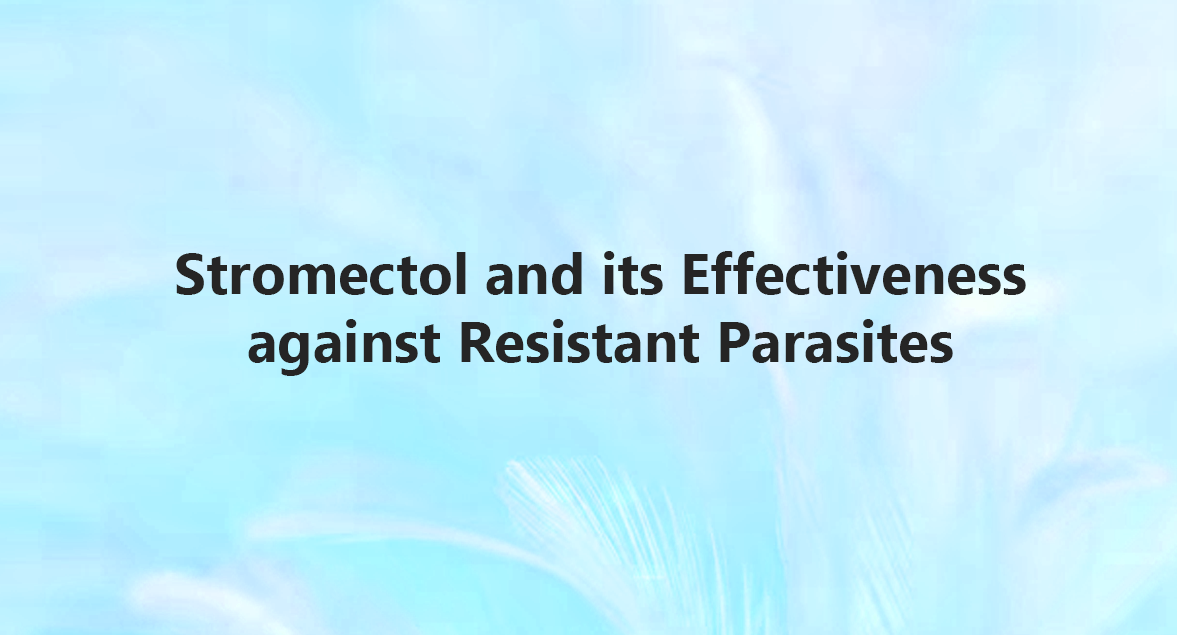Stromectol, also known by its generic name Ivermectin, is an antiparasitic medication widely used in the medical field to combat various parasitic infections. It has gained attention for its remarkable effectiveness in treating parasites that have become resistant to other treatments. This article delves into the properties and effectiveness of Stromectol against resistant parasites.
Understanding Stromectol:
Stromectol belongs to the class of drugs known as macrocyclic lactones. It works by disrupting the nerve impulses of parasites, leading to their paralysis and eventual death. The drug mainly targets nematodes and arthropods, making it a potent treatment against a wide range of parasitic infections.
Effectiveness against Resistant Parasites:
One of the most notable features of Stromectol is its efficacy against parasites that have developed resistance to other antiparasitic medications. Resistant parasites pose a significant challenge to the medical community, making it difficult to treat certain infections effectively. However, Stromectol’s unique mode of action has shown promising results in overcoming such resistance.
Studies have demonstrated that Stromectol’s ability to target specific neural receptors in parasites makes it less prone to resistance development. This targeted approach disrupts the parasite’s nervous system in a way that is not easily circumvented by adaptive mechanisms. As a result, Stromectol has been successful in treating parasitic infections that were previously difficult to manage due to resistance issues.
Common Uses of Stromectol:
Stromectol is utilized to treat a variety of parasitic infections in both humans and animals. Some of the common uses include:
- Onchocerciasis (River Blindness): A parasitic infection transmitted by black flies, Stromectol is highly effective in eliminating the parasitic worms responsible for this condition.
- Scabies: This contagious skin infestation caused by mites can be effectively treated with Stromectol, providing relief from itching and discomfort.
- Strongyloidiasis: An infection caused by the nematode Strongyloides stercoralis, Stromectol offers a reliable treatment option.
- Lymphatic Filariasis: Stromectol is used as part of mass drug administration programs to eliminate the parasitic worms responsible for this disease.
Administration and Dosage:
Stromectol is available in various forms, including oral tablets and topical formulations. The dosage and treatment duration may vary depending on the specific parasitic infection being treated and the patient’s weight and age. It is crucial to follow the prescribed dosage and complete the full course of treatment to ensure the best possible outcome.
Potential Side Effects:
Like all medications, Stromectol may cause side effects in some individuals. The most common side effects include nausea, headache, dizziness, and diarrhea. These side effects are usually mild and transient.
Rarely, more serious side effects may occur, such as allergic reactions, neurologic effects, or liver toxicity. It is essential to seek medical attention promptly if any unusual or severe reactions are experienced during Stromectol treatment.
Stromectol, or Ivermectin, has proven to be a highly effective antiparasitic medication against resistant parasites, offering hope in the fight against various parasitic infections. Its unique mechanism of action and the broad spectrum of activity make it a valuable tool in the medical community’s arsenal. However, it is crucial to use Stromectol under medical supervision and follow prescribed guidelines to ensure safe and effective treatment. As research continues, Stromectol’s role in combating parasitic infections and overcoming resistance is likely to evolve, providing improved healthcare outcomes worldwide.

Leave a Reply